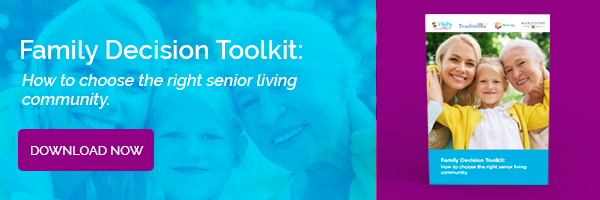No family member likes to think the worst will happen to a senior loved one. But health emergencies, natural disasters, accidents, and other unexpected events can occur without warning. If you are an adult child involved in the care of a parent, having a plan in place in case of an emergency is vital.
Today, we’ll cover three areas of emergency preparedness: an emergency care plan, a back-up caregiver plan and what you should do to plan for a natural disaster.
Emergency Care Plan Basics
Start by getting your older loved one’s medical information well organized. While you probably know which doctor they see for their arthritis and where they go for physical therapy, others likely won’t.
- Legal Documents: If your family member hasn’t done so already, encourage them to schedule an appointment with a local eldercare attorney to create the legal documents most adults need. While the attorney will be able to offer you the best advice on this matter, you will likely need a power of attorney for health care, a power of attorney for finances, and a will.
- Document Daily Routines: If your senior family member needs to stick to a specific diet or adhere to a strict daily routine, put all of those types of notes in order. Make it as easy as possible for someone else to provide your loved one with the support they need if you aren’t able to do so.
- Medical File Assembled: Create a binder of all of the senior’s important health care information. A medication list, contact information for their physicians and other health care professionals, and a complete medical history should be included. If you don’t have them, contact each of their doctors to ask for copies of treatment notes and visit summaries.
Back-Up Caregiver Plan
It isn’t uncommon for a weary caregiver to experience a health crisis of their own. Even something simple as a bad cold might leave you unable to provide the support your senior needs. If that happens, you need to have a plan in place for bridging the gap in care.
Here are a few tips for creating a back-up caregiver plan:
- Family & Friends: Think about who from your circle of family and friends might be able to pitch in and help with caregiving, even on a short-term basis. Create a list which includes contact information.
- Interview Respite Care Providers: It can also help give you peace of mind to interview in-home care agencies and senior living providers who offer respite services. Narrow your choices down to a few you feel comfortable with. Add their names and contact information to your back-up plan. In the event that you are sidelined from caregiving duties unexpectedly, it will be easier for others to follow your notes and arrange for care from a professional.
- Review Plans and Notes: Finally, make sure those on your back-up team know where to find everything. If possible, review the emergency care plan you created with them in person. Your goal is to keep your loved one’s care as seamless as possible.
Disaster Preparedness for Seniors
Finally, it is important to create a plan for your loved one should a weather emergency or other natural disaster occurs. Especially if the senior lives alone. It might be an earthquake if they live in the west or a blizzard in the north. Preparing for the worst is important.
The Family Caregiver Alliance recommends families create an emergency supply kit and store it in a location that is easy for the senior to access. It might be something you stash in the basement if your area is prone to tornados or in a closet near the exit door if earthquakes are a concern.
Your emergency supplies should include:
- A week’s worth of extra medications
- Food and water to last a week along with a can opener and other utensils that might be needed
- Pillows, blankets and a cot if space permits
- Flashlights and extra batteries
- A first aid kit with items such as bandages, gauze, medical tape, hand sanitizer, antibiotic ointment, and eye wash
- Any medical supplies and devices needed such as diabetes management supplies or an extra oxygen tank
- Copies of important items like Medicare and insurance cards
- An emergency crank radio
- A whistle to call for help
- A cane or other walking device
- Pet food and supplies if you have a furry friend
More Emergency Resources for Caregivers
Want to learn more about seniors, caregivers and emergency planning?
These sites have resources that will help you feel confident you are prepared for the worst:
- The American Red Cross a variety of tools and information on disaster planning
- Emergency Response Plan from the Department of Homeland Security
- Emergency Preparedness and You from the Centers for Disease Control and Prevention
Supporting an Aging Parent’s Needs
One thing most family caregivers have in common is an on-going feeling of uncertainty. Worrying if you are providing the best possible care for a senior comes with the territory. It’s why we created a special resource.
The Caregiver’s Checklist: Supporting An Aging Parent is a comprehensive tool that covers everything from how to assess a senior’s environment for safety risks to knowing the early warning signs of dementia. It is a free download we encourage you to take advantage of!



